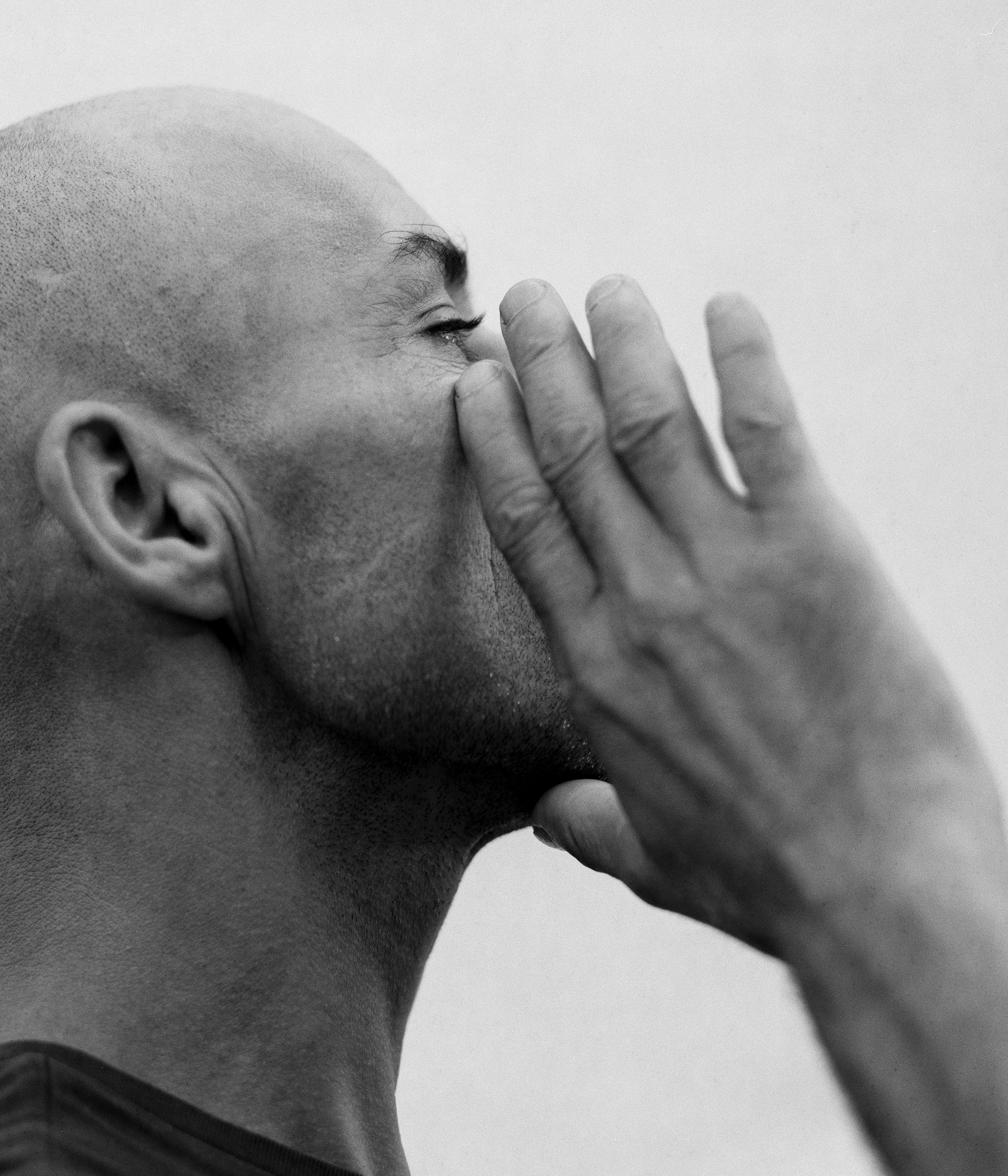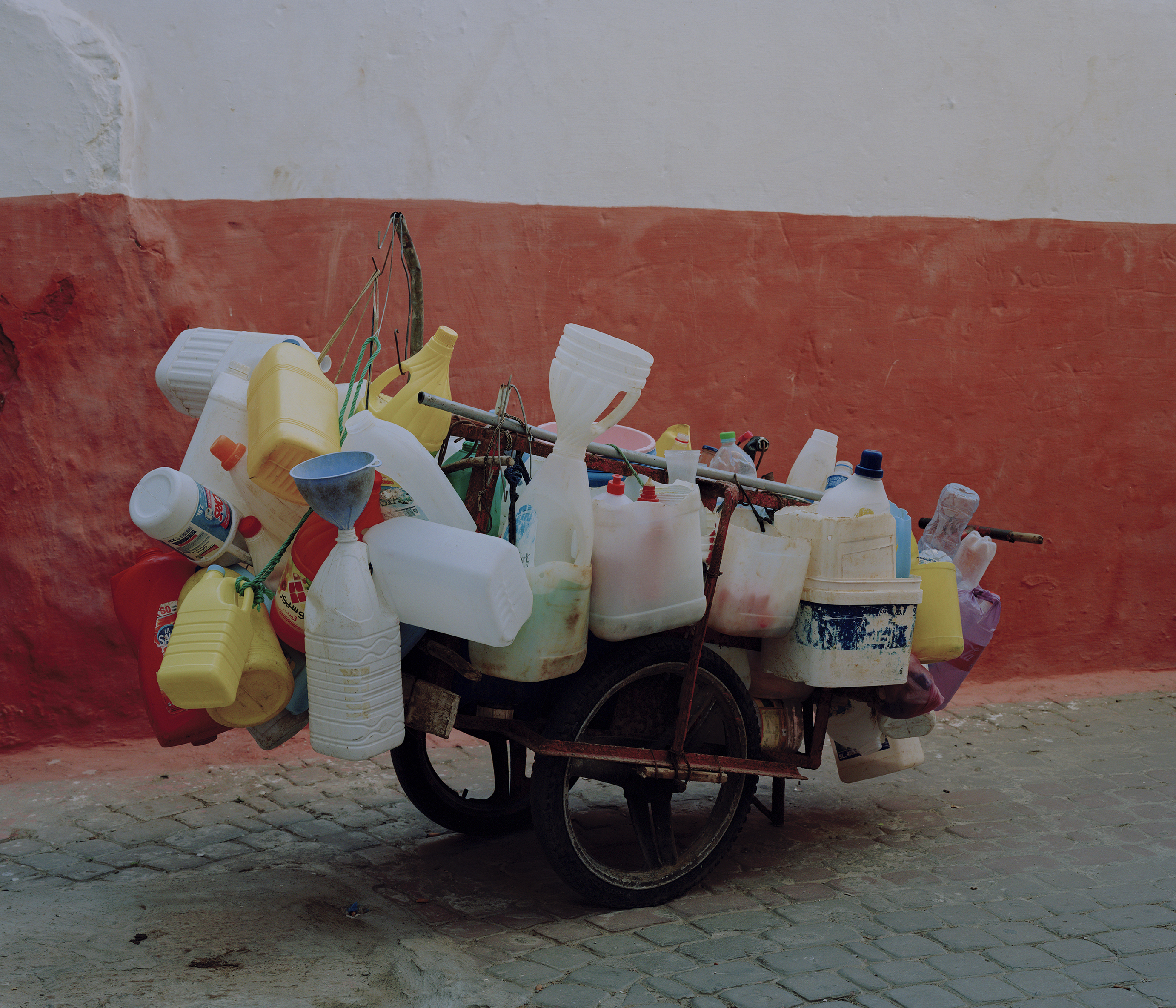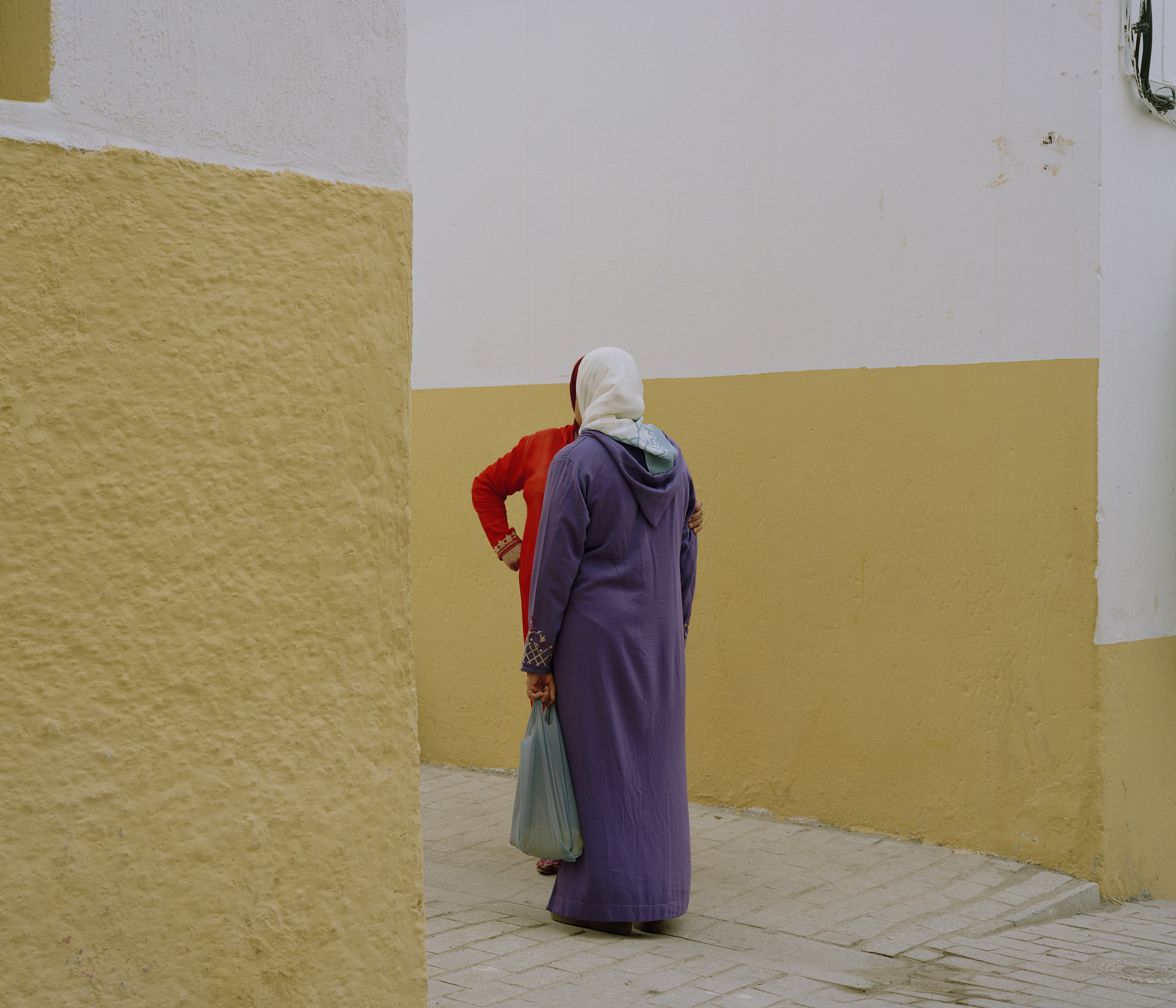"That’s the beauty of photography, it is a democratic medium"
We talk to Hicham Gardaf, the winner of this year's MAST Photography Grant on Industry and Work

On January 25th, Fondazione MAST named Moroccan-born, England-based photographer Hicham Gardaf the winner of this year's Photography Grant.
The MAST (Manifattura di Arti, Sperimentazione e Technologia – "Manufacturing of Arts, Experimentation and Technology") Photography Grant on Industry and Work seeks out photographers who are tackling issues related to the ever-changing world of industry and tech.
From Maria Mavropoulou, using AI text to image generators as the base photo for an intricate kaleidoscope, to Salvator Vitale, submitting 4K cinematic stills from various short films, the technical approach towards the grant was just as diverse as the content. Gardaf's winning series 'In Praise of Slowness' documents Tangier's bleach sellers, where there is growing concern around how social media could affect their livelihood.
Shot entirely on medium format film, Gardaf's choice of photographic medium hasn't changed since he first picked up a camera over a decade ago. Having always been aware of the expense of film and development, Gardaf's images are thoughtful, precise captures, telling the story of a little-known community feeling the effects of the modern world.
How does it feel to be the winner of the MAST grant?
I am honored and grateful to win this year’s MAST grant. It also feels special to win the prize for a project that I consider personal – one that is rooted in a particular place and time for me.
I would like to salute this year’s jury for welcoming projects that demonstrate an unorthodox and imaginative approach to photography. It proves that one can remain faithful to one’s idea, free from the formal, and often constraining, rules found in many photography competitions. And that’s very comforting.
How did you approach the people you featured in 'In Praise of Slowness'?
This was a lengthy process. First, I made a few (failed) attempts by trying to speak to the local bleach sellers I encountered in my neighborhood. Since they are pedlars, I had to wait for them to pass by our house. All three of the sellers from my neighborhood refused to be part of my work.
I spread the word and asked my friends and family to help me find bleach sellers who are willing to participate in the project. This did not work either – some had agreed on the first day then changed their mind the following day.
Most of the bleach sellers are over 60 years old and belong to a generation that is skeptical about social media and the internet. As there are no legal regulations regarding street selling, the vendors also feared losing their jobs. I ended up hiring an assistant and through his help, I managed to find people who were eager to take part in the project.
How does Tangier differ to other Moroccan cities?
When Morocco was under French and Spanish colonial rule, Tangier was an international zone. This status made it possible for people of different ethnicities and nationalities to take it as a place of residence. But perhaps, what is most remarkable, is the city’s geostrategic position. Sitting at the tip of Africa, it is considered a gateway to Morocco on both the Atlantic and the Mediterranean, separated only by eight miles from Spain.
Vast redevelopment projects have been carried out in the city since King Mohammed VI ascended to the throne in 1999 after Tangier was seen to have been neglected during the reign of his father, King Hassan II. The city continues to grow at an exceptional speed, particularly since the opening of Tanger Med, Africa’s largest port.

Khalid (dittico - diptych) 1

Khalid (dittico - diptych) 2
Is there a sense of slowness and ancient charm in Morocco that you don't find as much in other cities?
There is definitely a sense of slowness that could be found in Tangier more than any other big city in Morocco. I might even go as far as to say that slowness is one of its characteristics.
Has the expansion of the modern part of the city been beneficial to the people of Tangier?
The expansion of the city created more job opportunities, but this also resulted in making the city more polluted, dense and violent.
What projects are you working on at the moment?
I am currently working on a new commission by le Frac Nouvelle-Aquitaine in Bordeaux, France, for which I will make a new work that explores the peripheral landscape of the region. I’m also developing an idea for a new film which is scheduled to be shot this autumn.
When and how did you get into photography?
It was a pure accident! It goes back to the time when I worked as a bookseller in Tangier, 13 years ago. It was also a period in which I spent a lot of time going to the cinema and watching films. I believe movies helped me understand how composition and light works. But it was mainly the discovery of photo books and the writing of Georges Perec that gave me a taste for photography and observation.
I bought a second-hand camera from a local shop and started taking pictures immediately. I suppose that’s the beauty of photography, it is a democratic medium: anyone can take pictures. However, it took me three more years to decide that I want to be a full-time photographer. I quit my studies at university and my job at the bookshop and focused on photography.
What cameras do you use and do you have a 'go-to' film?
I mainly work with a Linhof Technika V and I use, occasionally, the Mamiya RZ67. I use Kodak Portra 160 for color and Ilford Delta 100 for black-and-white. I also used a Bolex H16 EL for shooting my recent film In Praise of Slowness.
Are the rising costs of film and developing affecting how you work?
I have been using film since I started photography 13 years ago. I couldn’t buy or process medium format film in Morocco so I had to send all my films to France, which, back then, was very costly. So, from the very start, and due to this constraint, I learned to be precise and economical. Each frame was precious and I took the time to compose and frame my pictures.
I don’t think this approach has changed much. I would even say that I take less pictures now since I have been using large format. So, to answer your question, yes, it does affect the number of pictures I take, but not how I work.
The Mast Photography exhibition is on at Fondazione Mast in Bologna, Italy until May 01. You can find out more information on the MAST website.
Follow Hicham Gardaf on Instagram to see more of his work.
The best camera deals, reviews, product advice, and unmissable photography news, direct to your inbox!

Having studied Journalism and Public Relations at the University of the West of England Hannah developed a love for photography through a module on photojournalism. She specializes in Portrait, Fashion and lifestyle photography but has more recently branched out in the world of stylized product photography. Hannah spent three years working at Wex Photo Video as a Senior Sales Assistant, using her experience and knowledge of cameras to help people buy the equipment that is right for them. With eight years experience working with studio lighting, Hannah has run many successful workshops teaching people how to use different lighting setups.



